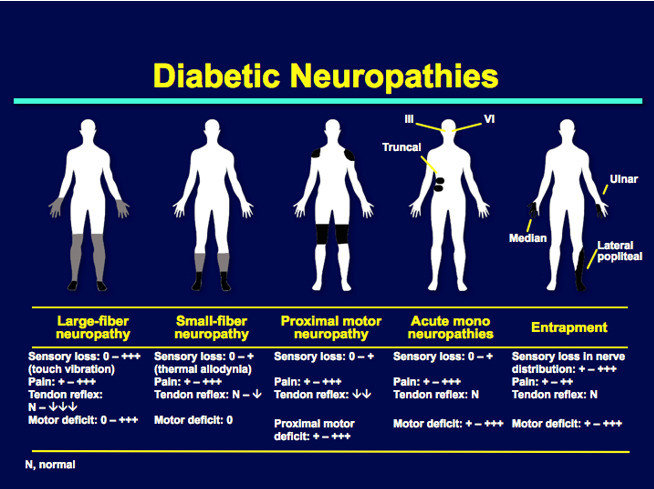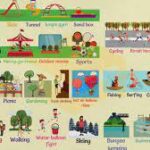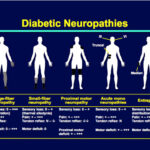The foot is probably the most neglected part of the body. Most of the time the feet are not pampered enough as much as the rest of the body. When one thinks of the complications that arise from long standing diabetes, most think of the eyes, heart, kidney and erectile dysfunction. The feet need extra care and attention daily. The aim of foot care when having diabetes is to reduce your chances of losing part of a toe, foot, leg or limb. The nerves carry the messages which carry touch, temperature and pain from the skin, bone and muscles to the brain. The risk factors for developing foot problems are the long standing diabetes, poorly controlled diabetes, those with kidney damage and those who are heavy smokers. The foot has 26 bones and 33 joints which are bound together by over 100 muscles, tendons and ligaments. The feet are responsible for balance, support, posture and well being.
Diabetes can gradually damage the nerves and /or the blood vessels of the feet. The warning signs that protect your feet are gradually lost. The warning signs when the nerves are affected are: the onset of tingling, pins and needles sensation, burning pain at night ( “my feet are on fire”) , change in the shape of the feet, loss of coordination and if you accidentally injure your feet and are unaware of it. The warning signs when the blood vessels are affected are when one has cramps even when at rest, if the feet are unusually cold, wounds take a longer time to heal and when the skin of the lower legs become shiny, smooth and lose hair.
One must develop a habit of checking the feet daily before going to bed. To see the under surface of the feet, one can use a hand held mirror.
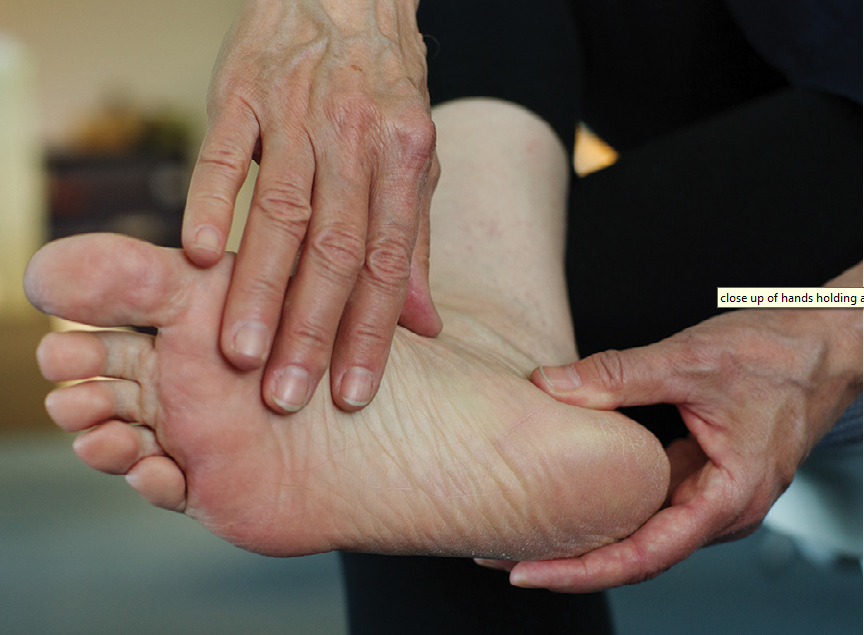
There are some conditions related to the feet which are useful to know- the arches of the feet which hold the bones of the feet together to maintain a shape. The arch can collapse due to aging or poor walking technique leading to a flat foot. There may be extra bony growths which are harmless or bunions. Claw foot develops when the toes stand upwards due to an arch collapse, the toe nail of the big toe may grow inside(on the sides) due to wrong technique while clipping the toe nails causing an in-growing toe nail, some get fungal infection between the toes due to excessive moisture being trapped there. For some people with diabetes, the feet become out of shape and disorganized bone layout and give rise to difficulties while walking (Charcots foot). Cracked heels, corns and calluses are well known. Gout, due to high uric acid levels, can affect the base of the big toe to start with. Color changes on the toes due to defective blood supply may cause the dreaded gangrene which may need an amputation. Due to defective sensation on the feet, one may get scalded due to contact with excessive heat or cold temperatures. Some may get fungal infection of the big toe nails which is called Onychogryposis which needs treatment by a skin Dr. Plantar fasciitis is another common condition which can affect the feet.
Plantar Fasciitis:
This is a common occurrence for many causing personal suffering and misery as it affects the daily routine. Being a diabetic is not a necessity for this to develop.
Plantar fascia is a tight band that runs on the under surface of the foot (sole of the foot) from the heel bone to the under surface of the toes. This tight band (ligament) helps hold the bones in place and also in maintaining the contour of the foot. This also is instrumental in absorbing the shock when the foot is in contact with the ground. A person will walk so many times a day unless if bedridden or sedentary. Normally the small bones of the foot bear the load, but when the bones are dysfunctional, the load is transferred to the plantar fascia which will cause this to get inflamed and later on tear which gives rise to the excruciating pain.
Usually the pain is felt at the bottom of the heel which is worse with the first few steps in the morning and is sometimes associated with prolonged standing or running on a hard surface, after a high intensity exercise involving the feet, after a long car drive and after walking on high heels for a long time.
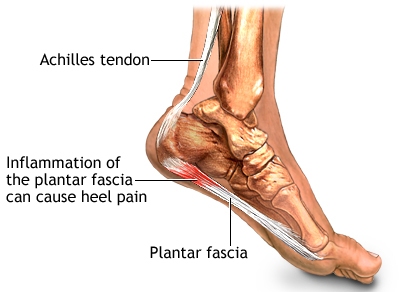
The commonest causes are the following:
- Wearing improper footwear- high heels or worn out shoes.
- Obesity.
- Faulty technique of walking or running.
- Loss of natural pad of fat due to ageing.
- Those having tight calf muscles.
- Those having flat feet caused by a collapse of the natural arch of the inside of the feet,
This is usually diagnosed after the bone doctor examines. Blood tests, an X ray, MRI scan may be taken to exclude other causes of a heel pain such as arthritis, fracture or a bony projection from the heel bone.
The initial treatment involves the following:
- Rest to the feet
- Ice compress
- Feet elevation
- Use of pain killers upon advice of the doctor.
- Use of better shoes- avoiding high heels, use of footwear with wider toe box, avoiding shoes which are worn out, using better fitting and flexible footwear helps.
- Avoidance of junk food
If the acute pain episode is not relieved with the above, you will need to meet the doctor again for further management. Some may need an injection to be given at the area close to the heel which will help reduce the inflammation and will help abate the symptoms for varying periods of time from 3 to 6 months or sometimes even longer. Some may need a more aggressive approach if resistant to treatment. Some might even need a surgery.
Once the acute pain is relieved, one must take steps to prevent a recurrent flare up.
- If one is used to running, reduction of the contact time and area with the ground will help.
- Staying off hard concrete grounds for running will help.
- Reduction of the intensity of training will help.
- Doing low impact exercises such as swimming, biking, using elliptical trainers helps.
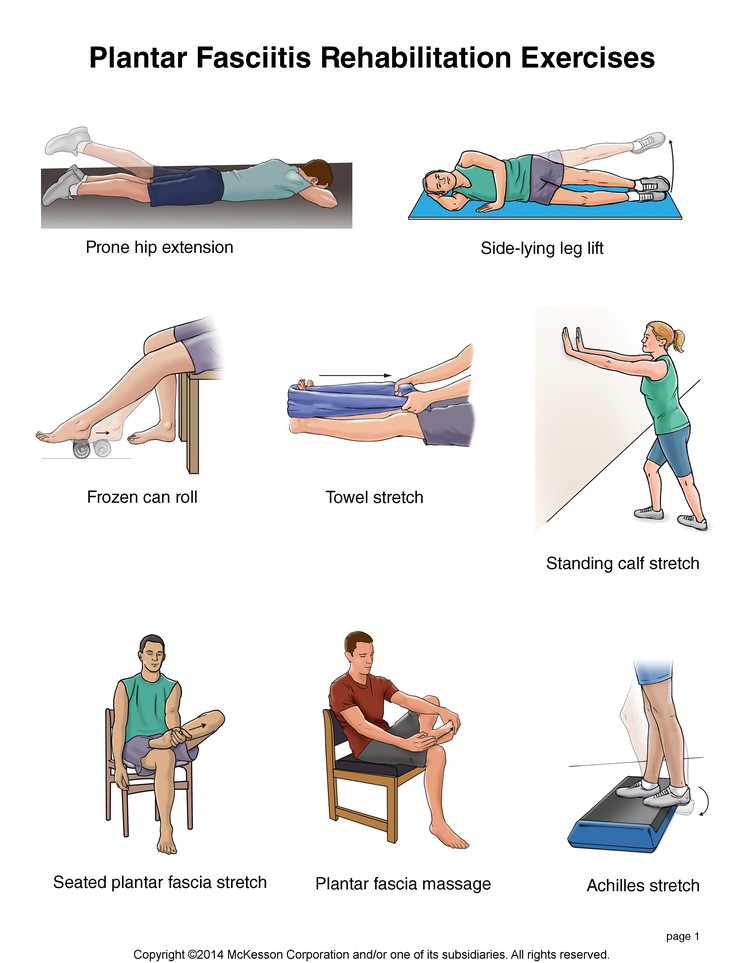
The simple exercises given below can help strengthen the fascia and the arches of the feet:
- Walking on the outsides of the feet.
- Walking on the insides of the feet.
- Walking with the heels close to each other and toes pointing outwards (like the famed gait of Charlie Chaplin).
- Walking with the heels apart and toes pointing to each other (the opposite of the above gait of Charlie Chaplin).
- Walking on the heels helps.
- Use of special massage balls as shown in the picture below will help release the trigger points. It is available online.
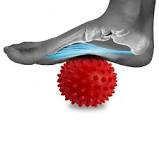
- There are orthotic devices which can alter the angle of ground interface and help shift the dynamics of the feet, but may cause pain at a different place later on.
- Self massaging of the feet can also help.
The Do`s and Don`ts of Foot care
- Check the soles of the footwear daily to look for cracks or any sharp objects may be present. Break new shoes in gradually.
- Wash the feet daily and take care to dry the spaces between the toes.
- Use foot cream on the upper and under surface of the foot daily at night- creams with 10% urea last longer.
- If you need to use the pumice stone to smooth out the corns or calluses, do so after bathing or washing the feet so the skin remains moist.
- Take care while trimming the toe nails so that it is cut straight and file the corners. Visit a podiatrist or a health care professional capable of handling those.
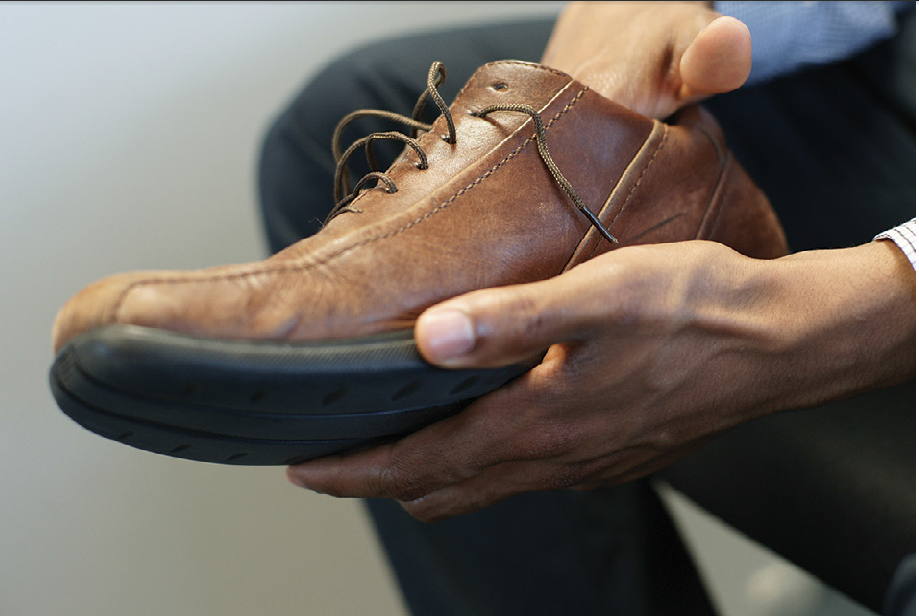
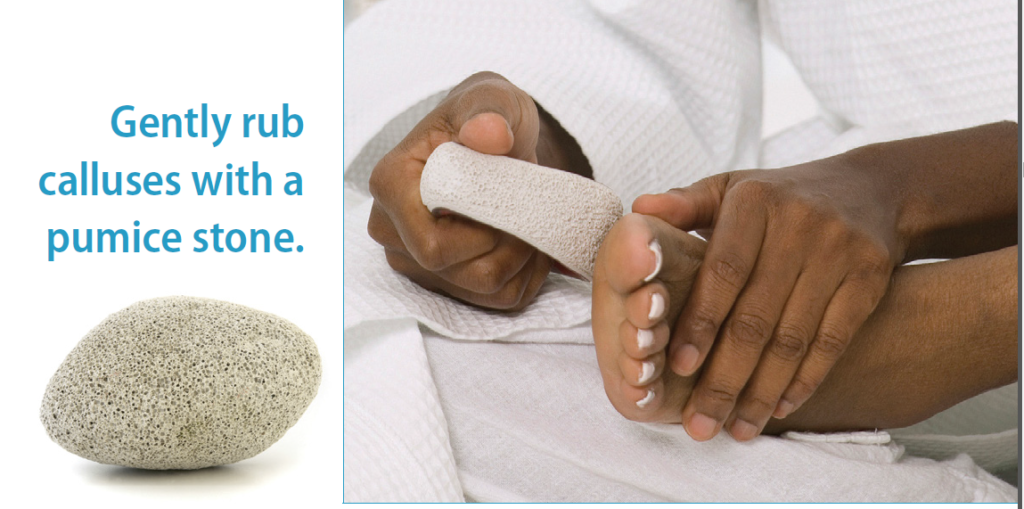
- Do not cut the sides of the toe nails as that can predispose to developing in growing toe nails.
- Avoid walking on hot pavement or hot sand.
- Do not cut corns or hard skin by yourself.
- Do not keep feet soaked in hot water or keep feet on hot water bottles or toast them near hot fire as the feet may have lost the sensation and may get burned or scalded.
- Do not sit cross legged for long hours. Wriggle the toes and move the feet at the ankles every half an hour (or earlier) to allow blood flow to be adequate. If the feet are immobile for long hours , like as when on long haul flights or driving long hours, the blood circulation in the calf muscles of the legs gets slowed down and may cause blocks which are dangerous and fatal for some ( called deep vein thrombosis) and pulmonary embolism when the blocks are transported to the lungs.
Urgent care to the foot is essential when the feet are
- swollen, painful, red and warm.
- pale, blue or black in color.
- breaches in the skin due to injury.
There are tests for the feet such as the monofilament test, biothesiometry, hot and cold sensitometry, pressure studies, measurement of the ankle brachial index and Doppler studies to determine if the blood vessels are normal in the lower limbs.
Choosing a footwear
Having a good pair of shoes for sports is essential. Choosing the right footwear is of prime importance once motivated to walk. A tennis or basketball shoe is stiff and is good for quick sideways movements, but unsuitable for either a walk or jog as the heel to toe flexibility is missing with these shoes.
When choosing the right shoes, go for shopping late afternoons when your feet will be slightly swollen, the shoes must be light, water resistant, well padded, and breathable. One must be able to wiggle the toes well.
The gents must be careful when buying pointed shoes (narrow toe box) as that will encourage crowding together of the toes with possible, corns, callosities, fungal infection between toes and never ending foot discomfort. It is important also to be careful while choosing shoes for day to day use. Use a shoe with a wide toe box instead.
During the pandemic, one may have resorted to purchasing footwear online. The pictures may look great, but footwear needs to be bought during the end of the day as the feet may swell a bit, one must choose a type in which toes can wriggle about and which fits comfortably. Sometimes the salesperson may coax you into buying one which “looks great” and may be tight, but they insist it will loosen up with time. However every time one wears such footwear may be so traumatic. Always have the feet measurement checked with the Brannock device a device seen in the shoe shops to measure size, but hardly used! The feet can widen or lengthen with ageing as the foot arches may sag and ligaments holding the bones may weaken. Thus, one foot may be bigger than the other. Checking on a wet footprint will give an idea about the arches of the foot. If the full feet imprint is seen, it means a flat foot, if imprint has only the toes and heel it means the arch is very high. The footwear must, ideally, be customized in such cases. Be careful of high heels as it may cause foot pain. Remember to change footwear often after checking for wear and tear. Inspect the sole and insides for sharp objects that may have pierced the sole. Allow the shoes to breathe by rotating them often. Caring of the feet is of prime importance especially when having diabetes.
Vinyl and plastic shoes do not breathe and so are not safe for use. The use of flat footwear is not good as it does not support the arch of the foot. These are the shoes used for ballet dancing and those practicing gymnastics. The platform wear looks stable, but the angle of the feet are not right which gives rise to nagging pain on the feet, heel and knee. The use of open flip flops risk the injury while on the beach as the toes and feet are uncovered. One can use a covered flip flop instead. The use of a pointy shoe risks the chances of friction callosities of the big toe and little toe due to overcrowding.
It is important to replace the shoes after having done 600 km- one must inspect the shoe for wear and tear. In places where there is snow, boots with padded inner linings are essential to prevent injuries due the extreme cold.
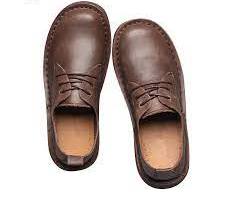
For women, the footwear is an important part of the attire. Sometimes fashion is given more priority over function.
The use of stilettos causes the weight of the body to balance upon a narrow bottomed base. Those wearing a stiletto are prone to develop crowding of the toes with increased chances to develop an Athletes itch between the toes, heel and calf pain, in growing toe nail, claw toes and pain at the base of the toes due to the increased pressure.
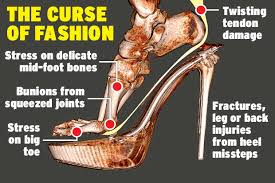
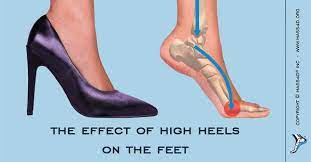
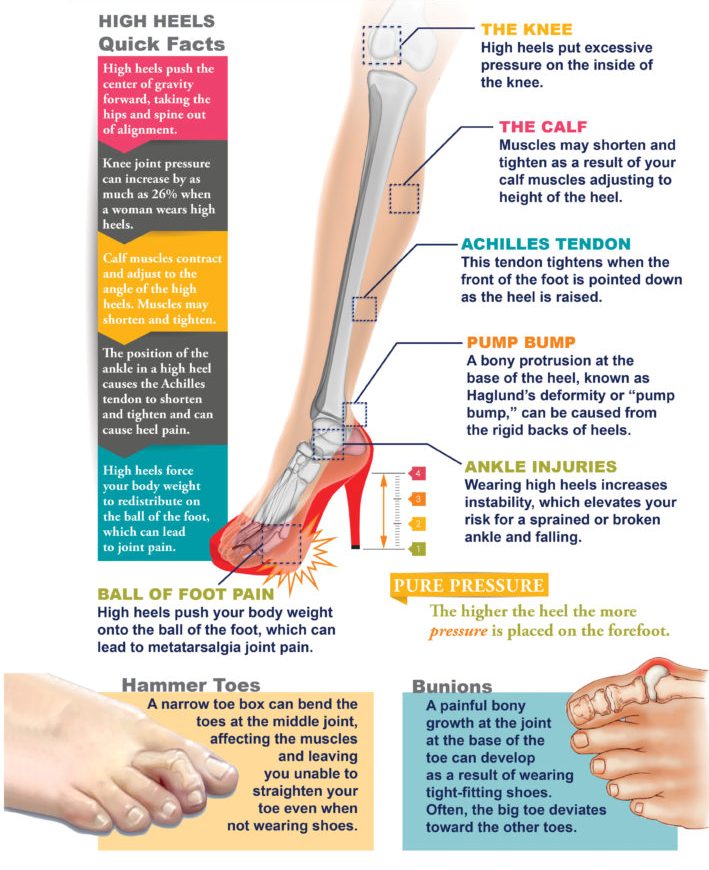
Walking has always been the safest and best way to exercise across all ages and gender. Probably those with defective vision, advanced neuropathy leading onto inability to feel sensations properly, those who are having issues with balance and posture or those with severe foot anatomy problems may have a hindrance to walking.
While walking use the heel to toe pattern of walking, watch your steps carefully while walking as many stare into the mobile screens and end up with accidents. Listening to music is good, but it is prudent to keep the volume low so one is aware of what is happening around such as the siren of an ambulance, a speeding vehicle, honking of a car, approaching cyclists or a barking dog.
Change the routine track of walking so as to break the monotony, walk with spine straight, eyes forward and arms loosely swinging. Carrying a torch and use of reflective material as dress can help in areas where lighting is an issue. It is important to stretch gently after a long walk.
The use of a mobile app or Fit bit® watch can help track either the distance covered or the steps taken or calories burned to help keep a personal log and also maintain the minimum of 150 minutes of exercise a week.
Use socks that are clean, lightly padded and those without seams.
Neuropathy
When the nerves are affected it is called Neuropathy. Diabetic neuropathy cannot be reversed, but the symptoms can be treated. The neuropathy pain is usually more pronounced at night probably due to less distractions at night.
This can present as peripheral neuropathy, autonomic neuropathy which can affect the heart rate, blood pressure, digestion, sweat glands, hypoglycemia unawareness and eyes, focal neuropathy affecting a nerve of the limb or face or torso and proximal neuropathy affecting the muscle groups of the thighs, buttocks or hip.
For those with autonomic neuropathy one may have to consult the cardiologist, gastroenterologist and urologist depending upon the symptomatology. For those with proximal neuropathy, there will be difficulty in getting up from a sitting position due to muscle wasting. A neurologist may run tests like the Nerve Conduction Velocity and /or Electromyelogram to ascertain the cause and plan treatment. The focal neuropathy is due to a single nerve getting trapped either due to swelling of the nearby structures as in Carpal tunnel syndrome or peroneal nerve syndrome or neuralgias of the face caused by some triggers.
This can be treated by anti depressants or anticonvulsants, or by medicines to improve vitamin B 12 levels , if deficient or by non pharmacological means such as application of creams containing capsaicin or acupuncture or TENS.
Charcots foot – due to increased pressure on the foot, the bones and joints of the feet change shape and cause the feet to be swollen, red or painful. This is not due to inflammation, but due to altered bony disposition. This leads to increased chances of developing foot ulcers. This can be treated by non surgical means such as preventing pressure on the affected side by using a plaster cast of the foot or a protective boot. When conservative measures fail, some may need a surgical correction.










